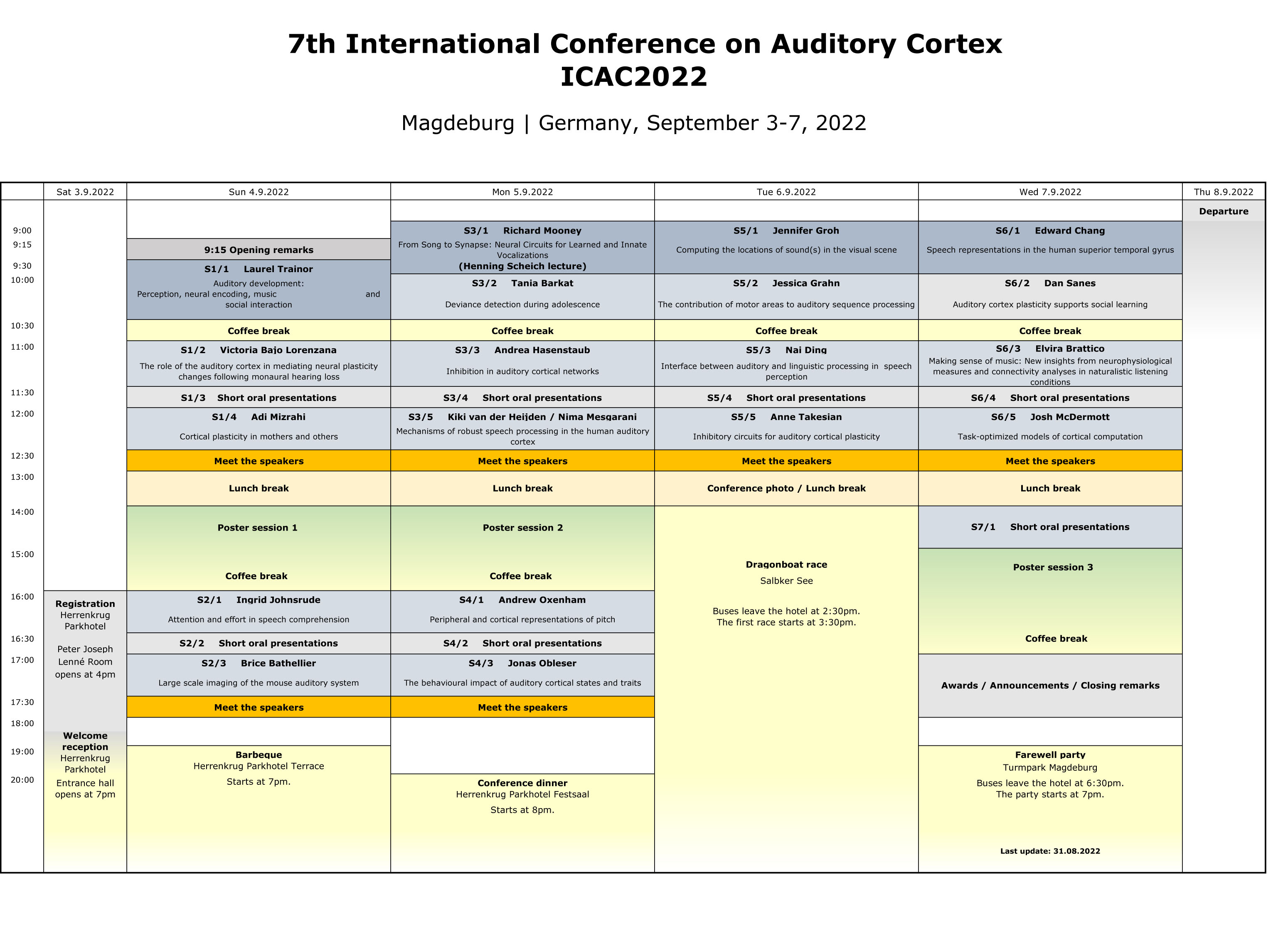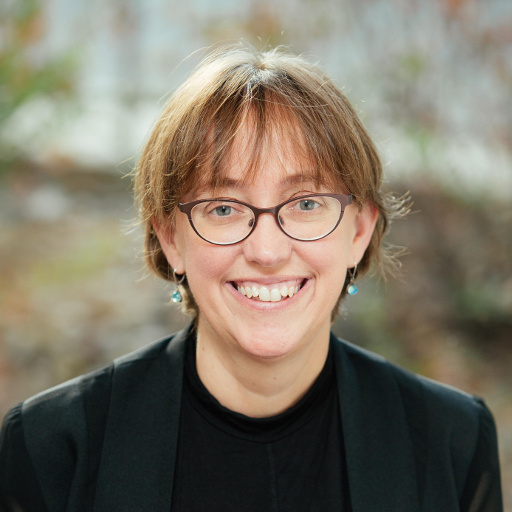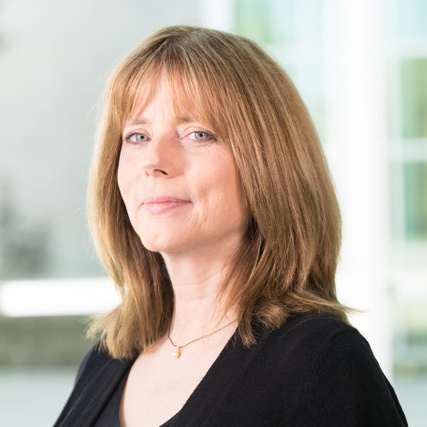Scientific Program
The scientific program is arranged around four keynote talks and fifteen main talks. In addition, twenty-four short talks were selected from the submitted abstracts. There will also be three poster sessions and opportunities for individual discussions of PhD students and young investigators with the keynote and invited speakers.
Detailed program
For all details of the program please follow this link.
Conference schedule (at a glance)
Here you will find the latest version of the conference schedule at a glance (last update: August 31, 2022).
Click here for download.

Keynote Speakers

Edward Chang
University of California San Francisco, USA
"Speech representations in the human superior temporal gyrus"


Richard Mooney
Duke University Durham, USA
Henning Scheich Lecture: "From song to synapse: Neural circuits for learned and innate vocalizations"
Laurel Trainor
McMaster University Hamilton, Canada
"Auditory development: Perception, neural encoding music and social interaction"

Main Talks
Victoria Bajo Lorenzana (University of Oxford, UK) "The role of the auditory cortex in mediating neural plasticity changes following monaural hearing loss"
Tania Rinaldi Barkat (University of Basel, Switzerland) "Deviance detection during adolescence"
Brice Bathellier (Paris-Saclay Institute of Neuroscience, France) "Large scale imaging of the mouse auditory system"
Elvira Brattico (Aarhus University, Denmark) "Making sense of music: New insights from neurophysiological measures and connectivity analyses in naturalistic listening conditions"
Nai Ding (Zhejiang University, China) "Interface between auditory and linguistic processing in speech perception"
Jessica Grahn (Western University, London, Canada) "The contribution of motor areas to auditory sequence processing"
Andrea Hasenstaub (University of California San Francisco, USA) "Inhibition in auditory cortical networks"
Ingrid Johnsrude (Western University, London, Canada) "Attention and effort in speech comprehension"
Josh McDermott (MIT Cambridge, USA) "Task-optimized models of cortical computation"
Kiki van der Heijden / Nima Mesgarani (Columbia University New York, USA) "Mechanisms of robust speech processing in the human auditory cortex"
Adi Mizrahi (Hebrew University Jerusalem, Israel) "Cortical plasticity in mothers and others"
Jonas Obleser (University of Lübeck, Germany) "The behavioural impact of auditory cortical states and traits"
Andrew Oxenham (University of Minnesota, Minneapolis, USA) "Peripheral and cortical representations of pitch"
Dan Sanes (New York University, USA) "Auditory cortex plasticity supports social learning"
Anne Takesian (Massachusetts Eye and Ear, Boston, USA) "Inhibitory circuits for auditory cortical plasticity"
Short Talks
The scientific organizing committee has selected 24 abstracts for short oral presentations based on scientific excellence and novelty, gender balance, balance between young and senior scientists, as well as between human and animal research:
Akritas et al. “Both sound onsets and offsets evoke pinna movements, and sound onsets evoke whisker and nose movements, in the awake head-fixed mouse”, University College London, UK.
Arenillas-Alcón et al. “Music induced neural plasticity begins before birth: a neonatal study”, University of Barcelona, Spain.
Auksztulewicz et al. “Dissociable laminar profile of “what” and “when” predictions in the human auditory cortex”, European Neuroscience Institute Göttingen, Germany.
Billig et al. “Tracking a non-spatial sound feature in human auditory cortex and hippocampus”, University College London, UK.
Dery et al. “Learning of Audio-motor skill is sensitive to the lateral relationship between trained hand and ear”, Tel-Aviv University, Israel.
Garcia-Rosales et al. “Echolocation-related reversal of information flow in a cortical vocalization network”, Ernst Strüngmann Institut gGmbH, Germany.
Huang et al. “Visual activations in early auditory cortex of monkeys are related to behavior” Leibniz Institute for Neurobiology, Germany.
Krauss et al. “Predictive coding and stochastic resonance as fundamental principles of auditory perception”, University Erlangen-Nuremberg, Germany.
Lawlor et al. “Role of the cholinergic system in early sensorimotor acquisition”, Johns Hopkins University”, USA.
Macedo-Lima et al. “Activity of orbitofrontal cortical neurons that project to auditory cortex correlates with perceptual sensitivity”, University of Maryland, USA.
Masri et al. “Rescue of hearing loss-induced perceptual deficits by viral expression of GABAB receptor in auditory cortex”, New York University, USA.
Michalek et al. “Discrimination learning induces global changes in auditory-evoked brain activation patterns in the Mongolian gerbil revealed by high field fMRI”, Leibniz Institute for Neurobiology, Germany.
Noda et al. “Targeted single-cell ablation uncovers network homeostasis of sound representation in the mouse auditory cortex”, University Medical Center Johannes Gutenberg-University, Germany.
Nourski et al. “Intracranial electrophysiology of human superior temporal cortex during a speech classification task”, The University of Iowa, USA.
Perrachione et al. “A structural connectivity-based parcellation of the human superior temporal lobe”, Boston University, USA.
Poole et al.”Behavioural and neural measures of auditory regularity detection in ferrets”, University College London, UK.
Rajendran et al. “Theme and variations: beat perception and neural encoding in auditory cortex of permutations and tempo variations of four temporal intervals”, Universidad Nacional Autónoma de México, Mexico.
Sacco et al. “Microstructural alterations in both white and gray matter following perinatal deafness in the cat as assessed with diffusion tensor imaging”, McGill University, Canada.
Schneider et al. “Extratelencephalic contributions to auditory-guided behavior”, University of Pittsburgh, USA.
Solyga et al. “Convergence of top-down inputs in layer 2/3 neurons in mouse auditory cortex”, Friedrich Miescher Institute for Biomedical Research, Switzerland.
Vavatzanidis et al. “The unfolding of the auditory world in infants and young children: the perception of music and speech characteristics in the first year of typical vs. cochlear-implant-aided hearing. An EEG study.” Technische Universität Dresden / Universitätsklinikum Dresden, Germany.
Wöstmann et al. “Neural signatures of auditory perception and attention following unilateral cochlear implantation”, University of Lübeck, Germany.
Zhu et al. “A parallel channel of state-dependent sensory signaling from the cholinergic basal forebrain to the auditory cortex”, Johns Hopkins University, USA.
Posters
There will be 3 poster sessions. You have to present your poster at one of these sessions (for presentation times see in your user account or here) but posters can be on display for the entire duration of the conference. Thus, please feel free to discuss posters also during breaks.
Your poster number corresponds to the ID number of your contribution. Poster size is max. 0.90 m (width) and max. 1.50 m (length); i.e. portrait format. Supplies for mounting your poster on the poster boards will be provided on-site.
